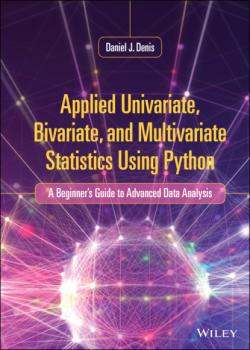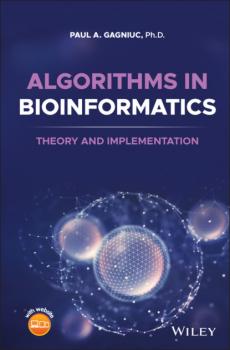John Wiley & Sons Limited
Все книги издательства John Wiley & Sons LimitedNano-Technological Intervention in Agricultural Productivity
Provides detailed information about the use of nanotechnology in remediating waste and pollution in agriculture Nano-Technological Intervention in Agricultural Productivity explores sustainable, eco-friendly technologies for remediating wastes and contaminated areas in both water and land ecosystems. Focusing on nano-technological innovations that use microbes and microbial agents to improve the quality and pollutant discharge of contaminated sites, this comprehensive volume also discusses molecular approaches for the characterization of nanoparticles, the biosynthetic pathways of microbes, gene and protein expression studies for bio-deterioration techniques, and more. Organized into nine chapters, the book opens with a thorough overview of the functions, classification, properties, synthesis, and applications of nanoparticles. Following a discussion of the environmental and agricultural implications of nanotechnology, the authors examine the current role and future prospects of nanotechnology in managing plant diseases, improving agri-food production, and increasing agricultural productivity. Subsequent chapters cover lignin nanoparticles, various applications of nanotechnology in agriculture, and nano-based advances in plant and microbial science. Offering an up-to-date account of the role of nanotechnologies in agricultural bioremediation, this book: Explores biotechnological advances in the development of sophisticated green technologies for waste minimization and waste control Emphasizes the use of microbes for degradation and removal of various xenobiotic substances Discusses bioremediation approaches in relation to the impact of increased urbanization and industrialization on the environment Covers a variety of applications of nanotechnology in agriculture, including nano-fertilizers, nano-biosensors, nano-pesticides, and nanoparticle protection in plants Nano-Technological Intervention in Agricultural Productivity is a valuable resource for students in plant biotechnology and agricultural science and engineering, as well as an important reference for researchers in plant biotechnology and agricultural sciences, particularly those with interest in the use of nanomaterials for pollution remediation and sustainable development.
Traditionelle Chinesische Medizin für Dummies
Wenn die Schulmedizin an ihre Grenzen stößt, kommen alternative Heilverfahren ins Spiel. Hier nimmt die Traditionelle Chinesische Medizin eine besondere Rolle ein. Jean Pélissier stellt die wichtigsten Aspekte der TCM fachlich fundiert und leicht verständlich dar. Er erläutert das Zusammenspiel von Yin und Yang und deren Einfluss auf die Lebensenergie Qi und zeigt die ganzheitliche Sichtweise der TCM auf Gesundheit, Krankheit und den menschlichen Körper. Sie lernen die fünf therapeutischen Säulen, auf denen die TCM beruht – Kräutermedizin, Bewegungsübungen, Massage, Ernährung und vor allem Akupunktur – und die zahlreichen Anwendungsgebiete kennen – von der Behandlung von chronischen Schmerzen, Allergien oder Stresserkrankungen über Atemwegserkrankungen bis zur Nikotinentwöhnung.
Machine Learning Approach for Cloud Data Analytics in IoT
In this era of IoT, edge devices generate gigantic data during every fraction of a second. The main aim of these networks is to infer some meaningful information from the collected data. For the same, the huge data is transmitted to the cloud which is highly expensive and time-consuming. Hence, it needs to devise some efficient mechanism to handle this huge data, thus necessitating efficient data handling techniques. Sustainable computing paradigms like cloud and fog are expedient to capably handle the issues of performance, capabilities allied to storage and processing, maintenance, security, efficiency, integration, cost, energy and latency. However, it requires sophisticated analytics tools so as to address the queries in an optimized time. Hence, rigorous research is taking place in the direction of devising effective and efficient framework to garner utmost advantage. Machine learning has gained unmatched popularity for handling massive amounts of data and has applications in a wide variety of disciplines, including social media. Machine Learning Approach for Cloud Data Analytics in IoT details and integrates all aspects of IoT, cloud computing and data analytics from diversified perspectives. It reports on the state-of-the-art research and advanced topics, thereby bringing readers up to date and giving them a means to understand and explore the spectrum of applications of IoT, cloud computing and data analytics.
The Courageous Classroom
Help students and educators cope with fear in the classroom with this up-to-date new resource In The Courageous Classroom: Creating a Culture of Safety for Students to Learn and Thrive , community psychiatrist Dr. Janet Taylor and nationally acclaimed educator, Jed Dearybury deliver a concise and insightful take on the culture of fear in schools around the country. You'll learn about the various ways fear is present in students and educators, practical tools and strategies for educators to cope with fear and anxiety in the classroom, the reality of racism, homophobia and microaggressions and their impact on learning, and how to create a landscape of calm in your classroom. This important book will show you: The difference between fear and anxiety and how to respond to both How to create social-emotional learning environments where students feel mentally and physically safe Why, despite schools being safer than ever, students and educators fear for their personal safety How to manage educator stress, fear, and anxiety in a time of increasing coverage of school shootings Perfect for K-12 public school educators, Courageous Classrooms will also earn a place in the libraries of educators in training and parents with school-age children who wish to better help children cope with fear.
Applied Univariate, Bivariate, and Multivariate Statistics Using Python
Applied Univariate, Bivariate, and Multivariate Statistics Using Python A practical, “how-to” reference for anyone performing essential statistical analyses and data management tasks in Python Applied Univariate, Bivariate, and Multivariate Statistics Using Python delivers a comprehensive introduction to a wide range of statistical methods performed using Python in a single, one-stop reference. The book contains user-friendly guidance and instructions on using Python to run a variety of statistical procedures without getting bogged down in unnecessary theory. Throughout, the author emphasizes a set of computational tools used in the discovery of empirical patterns, as well as several popular statistical analyses and data management tasks that can be immediately applied.Most of the datasets used in the book are small enough to be easily entered into Python manually, though they can also be downloaded for free from www.datapsyc.com. Only minimal knowledge of statistics is assumed, making the book perfect for those seeking an easily accessible toolkit for statistical analysis with Python. Applied Univariate, Bivariate, and Multivariate Statistics Using Python represents the fastest way to learn how to analyze data with Python.Readers will also benefit from the inclusion of:A review of essential statistical principles, including types of data, measurement, significance tests, significance levels, and type I and type II errorsAn introduction to Python, exploring how to communicate with PythonA treatment of exploratory data analysis, basic statistics and visual displays, including frequencies and descriptives, q-q plots, box-and-whisker plots, and data managementAn introduction to topics such as ANOVA, MANOVA and discriminant analysis, regression, principal components analysis, factor analysis, cluster analysis, among others, exploring the nature of what these techniques can vs. cannot do on a methodological levelPerfect for undergraduate and graduate students in the social, behavioral, and natural sciences, Applied Univariate, Bivariate, and Multivariate Statistics Using Python will also earn a place in the libraries of researchers and data analysts seeking a quick go-to resource for univariate, bivariate, and multivariate analysis in Python.
Nachhaltig investieren für Dummies
Sie wollen mit Ihren Geldgeschäften die Welt ein bisschen besser machen? Ihr Erspartes in Unternehmen mit einer nachhaltigen Geschäftsidee investieren, die umweltfreundlich und fair wirtschaften und vielleicht sogar noch soziale Projekte unterstützen? Dieses Buch gibt Ihnen Tipps für die Auswahl von nachhaltigen Aktien, Anleihen, ESG-konformen Fonds und ETFs. Darüber hinaus gibt es für Sie als nachhaltig orientierten Anleger aber noch eine Vielzahl anderer innovativer Möglichkeiten, Ihr Geld «gut» anzulegen: Lesen Sie alles über Green und Social Bonds, Investments in nachhaltige Sachwerte, Mikrofinanz oder Crowdinvesting und warum eines dieser Themen sicher auch zu Ihren Vorstellungen passt. Erfahren Sie, wie Sie echte nachhaltige Angebote von solchen, die «Green-washing» betreiben, unterscheiden, warum die SDGs eine gute Messlatte sind, was Gütesiegel aussagen und last but not least warum auch Ihre Hausbank einen Beitrag leisten kann und wie Sie dieser in Sachen Nachhaltigkeit auf den Zahn fühlen können.
Reise-Sprachführer Russisch für Dummies
"Reise-Sprachführer Russisch für Dummies" bietet einen schnellen Überblick über die wichtigsten Wörter und Redewendungen für den Alltag. Jedes Kapitel beschäftigt sich mit einer Alltagssituation: So haben Sie schnell die passenden Sätze parat, wenn Sie sich jemandem vorstellen, im Restaurant bestellen oder nach einer Wegbeschreibung fragen. Dazu bekommen Sie eine kurze Einführung in die Grammatik und Aussprache des Russischen.









